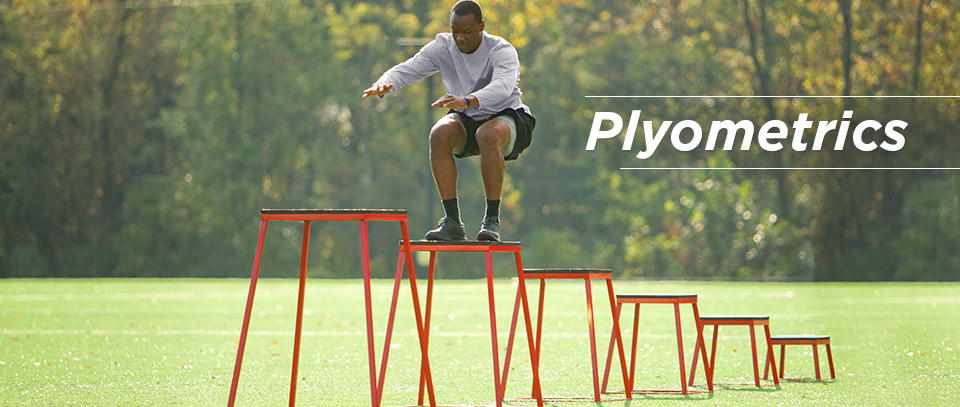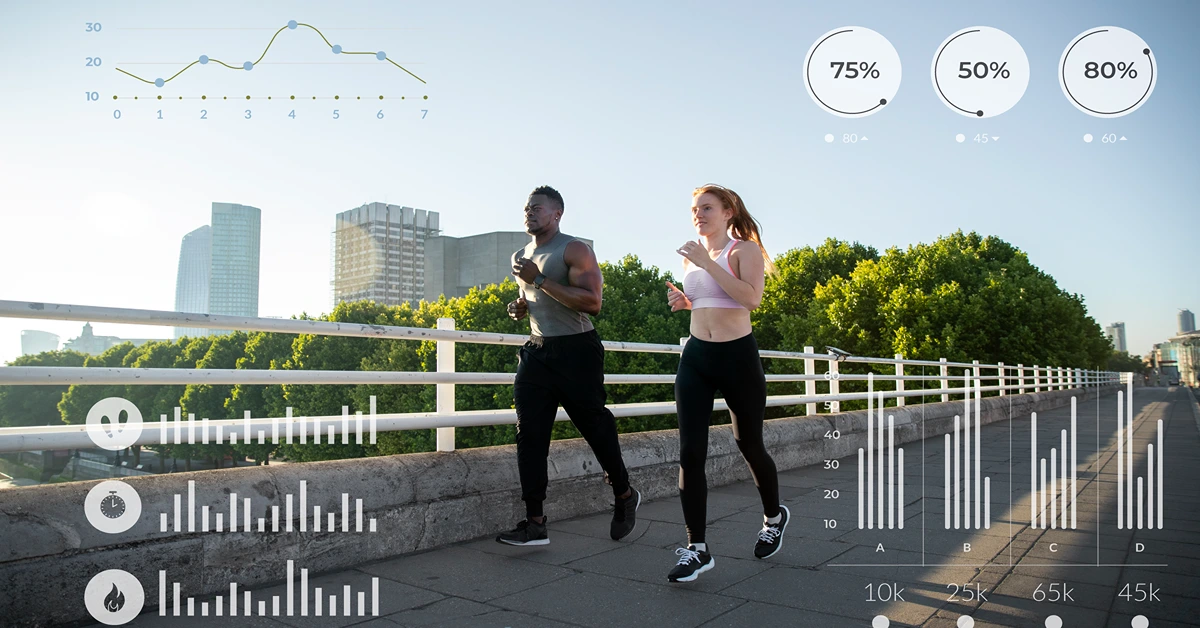As you read these words, hundreds of elite athletes are using something called plyometrics to get ready for the Olympics.
If you’ve never heard of it, you’re not alone. Plyometrics are just beginning to get noticed by everyday athletes.
| Always be sure to properly warm up before doing plyometric exercises
Find personal trainers who are experienced with plyometrics through the National Strength & Conditioning Association, a non-profit coaching network. |
Plyometric drills train you to make the explosive movements that are integral to most sports. Think of throwing a basketball from half court, jumping over a hurdle or striking a punching bag. These are three very different movements, but all require fast muscle contractions — a combination of speed, flexibility and coordination.
Plyometrics as an exercise is different from ordinary strength training (slow reps and sets) because the muscle stretches like a rubber band before making a sudden contraction, writes trainer Donald Chu in Jumping Into Plyometrics. It is this stretch and contraction that can put more strength behind your serve or speed into your basketball game.
Basically, we’re talking about power. But in order to build this kind of power, you need to begin on a solid fitness footing.
“You don’t hear a lot about plyometrics because you need an excellent foundation of overall fitness before you can do them,” says Sam Varner, who has trained Olympic skiers and now writes books on fitness. “But the average fit person could achieve a higher level with plyometrics.”
You won’t gain the plyometrics power by lifting weights or riding the stationary bike at the gym.
Some of the drills, which include hopping and skipping, might seem a little goofy, but the results they can offer are serious.
Let’s talk about improving your already excellent tennis game. You can jog all you want, spend more time on the NordicTrack or practice more yoga postures, but they won’t improve your game. What you need is to work on quick lateral movements, explosive arm movements and leaps. What you need is the power of plyometrics.
Coaches have long understood the importance of plyometrics, encouraging boxers to jump rope and football players to dodge cones. The current U.S. Track and Field Coaching Manual, for example, has middle-distance runners leaping hurdles. It may seem to have nothing to do with running the 1,500 meters (the metric mile), but milers need to put on bursts of speed, particularly with the finish line in sight.
While plyometrics may help give you the edge you need to ace your opponent in tennis or clean up on the basketball court, conditioning coaches throw out more than a word of caution when it comes to plyometrics. This is heavy-duty stuff. Even if you are highly fit and have enjoyed an injury-free history, you will want to start with low-intensity plyometric exercises.
Ten ways to get power from plyometrics:
1. Skipping. Skip forward and backward.
2. Gallop. Don’t feel too silly, galloping is an official exercise in the U.S. Track and Field Training Manual.
3. Jump rope — even if you’re not a boxer. This is not just for little girls with pigtails. Jumping rope is a tough warm-up.
4. Bound up stairs. Do it with long strides, arms swinging and legs springing. Bounding is basic plyometrics. It will take the wind out of you, so start with just 10 or so steps.
5. Hop. Two legged hops can be done with or without props. You can jump onto a platform or over cones. You can do one hop at a time or a series. Advanced hoppers can use hurdles.
6. Stationary one-legged hops from one foot to the other. This drill can train you in explosive lateral movements. Chu recommends you do this exercise by jumping from cone to cone spanning a distance of three to four feet.
7. Reach for the rim. Stand under a basketball hoop, squat slightly and explode upward, reaching for the rim. Do this several times.
8. Throw (and catch) a basketball. Start with a basketball and work your way up to a medicine ball. This is hardcore plyometrics for your upper body. Do over-the-head tosses, hooks and straight-forward two-handed passes. If you don’t have a partner, use a wall.
9. Make up your own. Once you get the hang of jump training, you can make up your own exercises, including drills that approximate the movements of your sport.
10. Remember the real thing — actual sports. If you feel you’ve slowly lost the ability to jump, hop and throw since, say, high school, don’t blame age alone. Blame a lifestyle that is — please admit it — less sports-oriented.
How often do you shoot hoops, throw a softball or join a friendly volleyball game? Sports will help your fitness, just as formal plyometric drills will help your sports.
A quick search for plyometric workout on YouTube can give you many workout routines to follow.





